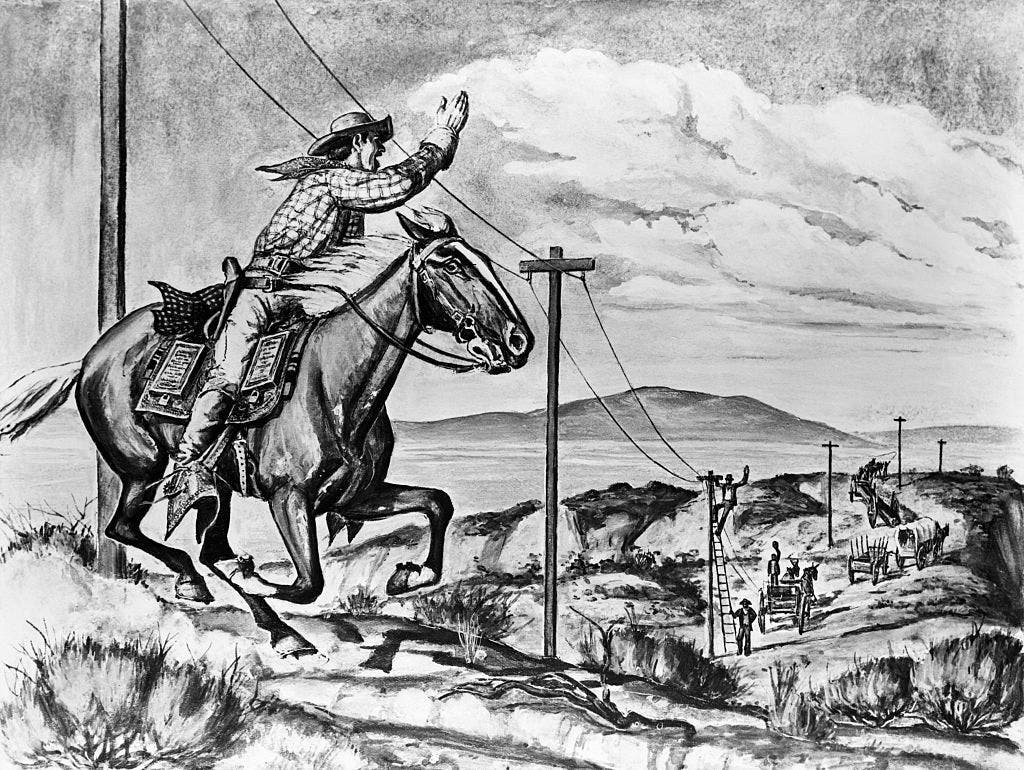On October 24, 1861, Western Union completed the transcontinental telegraph, connecting communications between the Atlantic and Pacific oceans for the first time. The lines were joined in Salt Lake City, marking a significant milestone in American history during the Civil War. The completion of the telegraph was seen as a way to strengthen the attachment between the east and west to the Union. This technological advance, pioneered by Samuel F.B. Morse, marked the end of the Pony Express, which had been the previous fastest means of communication between the eastern and western United States. The Pony Express officially closed two days later on October 26, 1861.
The desire to create a transcontinental telegraph line had begun just over a year before the completion, with Congress authorizing a subsidy of $40,000 a year to any company building such a line. The Western Union Telegraph Company took up the challenge and began work on the critical link between Missouri and Salt Lake City. The completion of the telegraph rendered the Pony Express obsolete, ending a brief but storied chapter in American history. The transcontinental telegraph was one of the significant milestones in the country’s quest to meet their Manifest Destiny and unite a nation from coast to coast.
Another pivotal event in American history was the journey of explorers Meriwether Lewis and William Clark, who found a route to the Pacific Ocean after an 18-month expedition from St. Louis in 1805. The transcontinental railroad was completed on May 10, 1869, in Promontory Point, Utah, with the driving of a ceremonial last gold spike. The Panama Canal was finished on August 15, 1914, connecting the oceans by sea without the need to navigate around Cape Horn. The first non-stop transcontinental flight was completed on May 3, 1923, by U.S. Army pilots from Long Island to San Diego, highlighting the continued advancements in transportation and communication in the country.
Challenges faced the construction of the transcontinental telegraph, including vast distances and the lack of resources in the middle of the continent. Wire and glass insulators had to be transported by sea to San Francisco, then carried by horse-drawn wagons over the Sierra Nevada. Additionally, sourcing and supplying the thousands of telegraph poles needed was a major feat, particularly in the treeless Plains country, requiring the poles to be shipped from the western mountains. Despite these challenges, the completion of the transcontinental telegraph was a significant achievement that revolutionized communications in America.
The completion of the telegraph was celebrated as a step towards a more connected and united nation, as messages could now easily travel between the two coasts in a matter of seconds. The revolutionary new form of communication facilitated faster and more efficient exchanges of information, cementing the idea of a unified country stretching from one end to the other. The completion of the transcontinental telegraph played a crucial role in shaping the future of the United States and in the development of technology that continues to impact society to this day.



